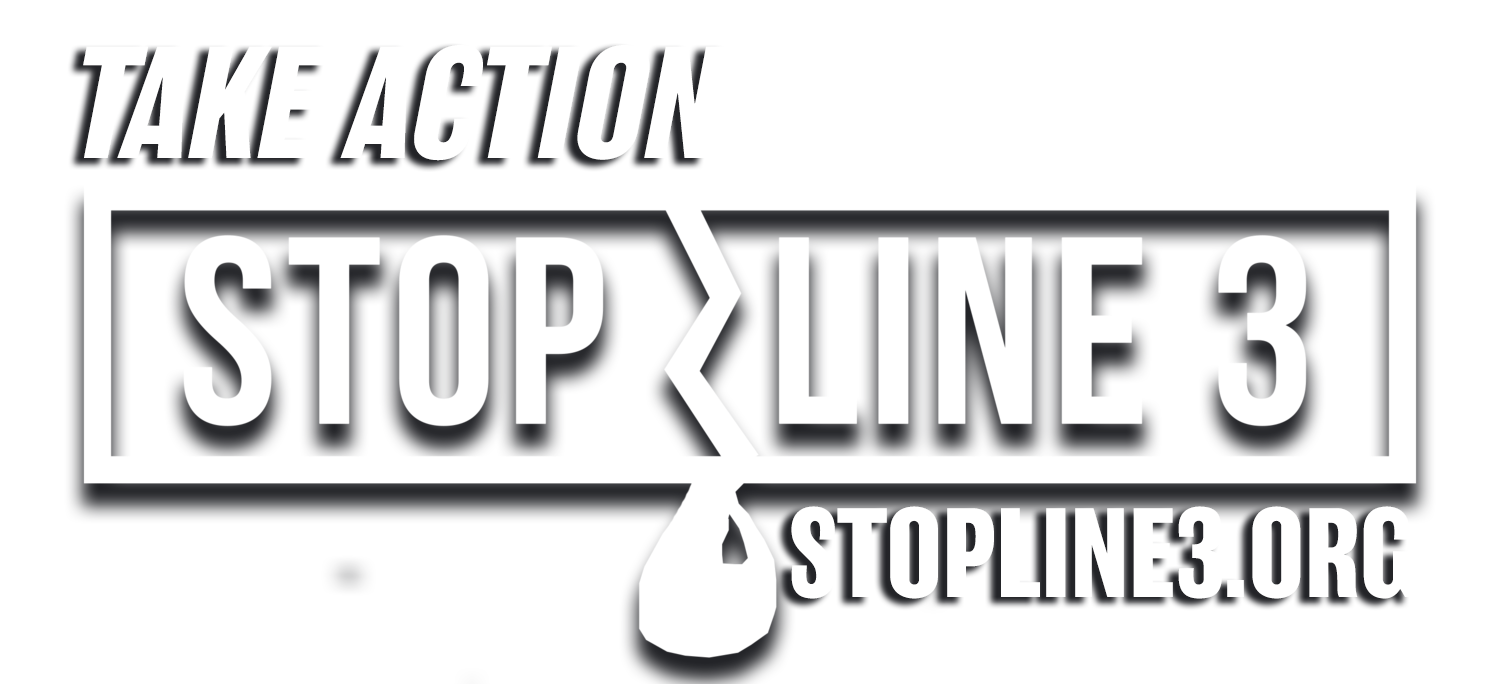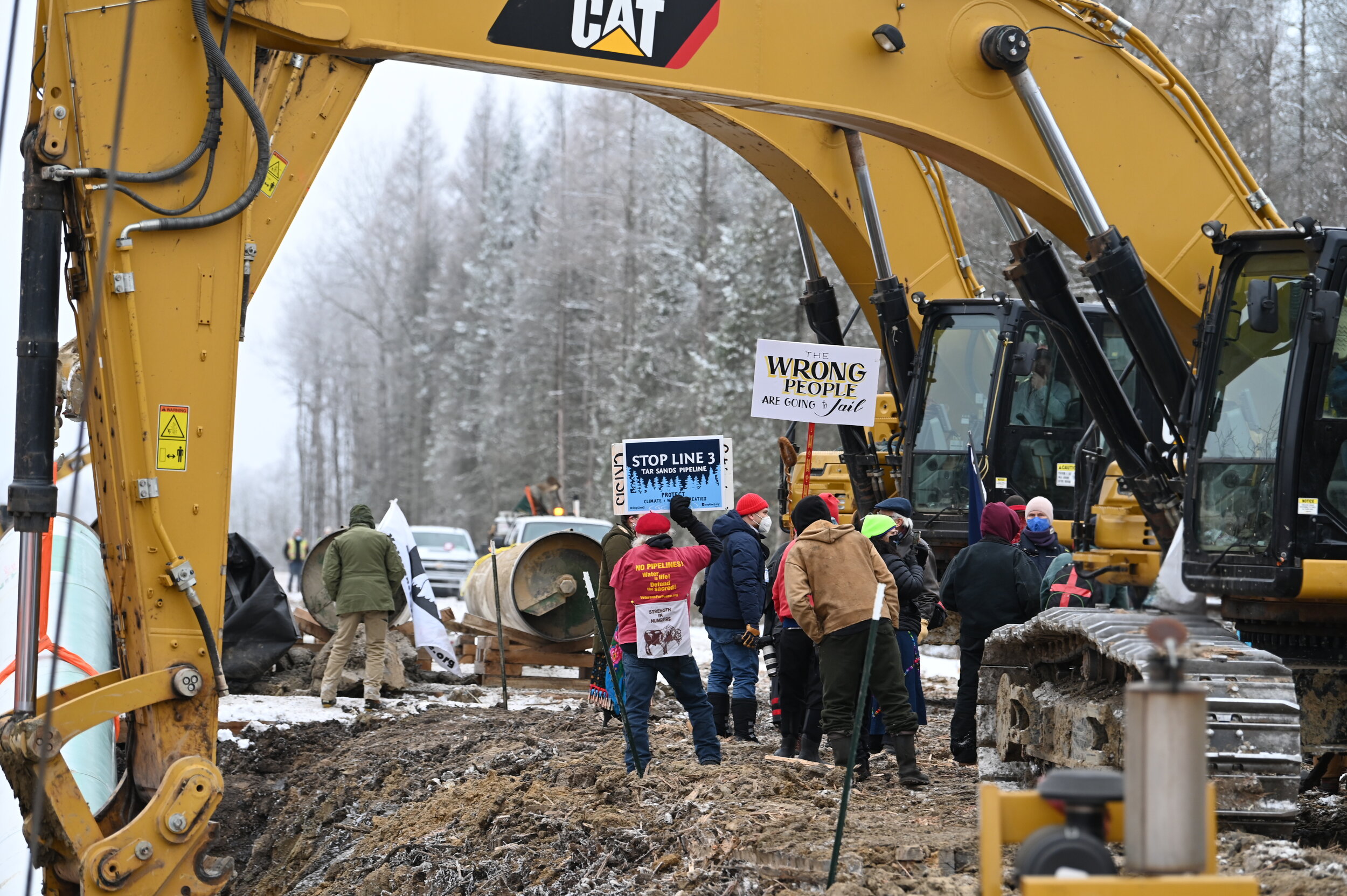MEDIA ADVISORY
RESOURCES: HOW TO REMOTELY COVER THE LINE 3 CONSTRUCTION CONTROVERSY AND GROWING PROTESTS IN NORTHERN MINNESOTA AMONG NATIVE AMERICANS AND OTHERS OPPOSED TO A PIPELINE CARRYING POLLUTING TAR SANDS OIL FROM ALBERTA, CANADA
The following Media Resource Guide has been prepared to help you and your news organization cover this developing energy and Indigenous Rights story from afar.
Below you will find these assets and sources:
Active websites that are frequently refreshed with new information, maps and graphics including video, photos -- live streaming of on-the ground actions -- and commentary.
Social Media outlets worth monitoring (see above).
Legal filings to date –include 5 appeals in state and 1 in federal court. *
Mainstream print, broadcast and online Media in Minnesota reporting regularly on Line 3 developments.
Contact information for Native organizations, environmental, religious and other groups actively opposed to the line either through litigation, organized resistance, or both.
CLICK HERE FOR A MAP OF THE PIPELINE ROUTE, RELATED SITES, TREATY TERRITORY, WATER CROSSINGS AND OTHER IMPORTANT INFORMATION AND LOCATIONS IN NORTHERN MINNESOTA
Frontline Photos + Video
Press Releases
Free Photo and Video Assets Available to Media:
Professional filmmaker and photographer Keri Pickett is often onsite of Line 3 resistance actions and has a growing portfolio of photos and videos to share along with Sarah LittleRedfeather of Honor the Earth.
CONTACT: 612-801-6727 / keripickett@gmail.com / Frontline Instagram Postings / Folder in DropBox
CONTACT: littleredfeather@honorearth.org / Frontline Instagram Postings / Folder in DropBox
BACKGROUND
After six years of contentious regulatory hearings – numerous lawsuits and appeals, and more than 60,000 Minnesota citizens and tribal members opposed officially on the record – the controversial new Line 3 tars sands oil pipeline is now being hastily constructed by the Canadian energy corporation, Enbridge, in northern Minnesota.
The construction is taking place on ceded Anishinaabe Treaty lands, during a pandemic, with thousands of out of state workers deployed who will potentially strain already fragile healthcare systems and medical staff should Covid-19 continue to escalate along the Line 3 route.
The line will cross more than 200 water bodies including under the Mississippi River -- source of many potable water systems for millions of people – plus sensitive watersheds, ecosystems and pristine landscapes in northern Minnesota.
It’s coming at a time when there is major global divestment of $11 trillion or more from fossil fuels in the face of escalating climate change, according to the October 2018 Intergovernmental Panel on Climate Change’s “Special Report on Global Warming of 1.5C” and the November 2018 Trump Administration’s “Fourth National Climate Assessment” report, both warning of continuing and severe economic and environmental damages, mass migrations, and other global consequences unless more direct action is taken by countries now.
The new 340-mile pipeline corridor through northern Minnesota will transport more than 760,000 barrels per day or more of toxic tar sands oil, at a cost of over $2.6 billion dollars.
Tar sands oil is the dirtiest, most polluting oil on the planet – and nearly impossible to clean up since it sinks to the bottom of any water body. (National Geographic)
Line 3 cuts through treaty territory where Anishinaabe tribal members have treaty rights off of reservations that include hunting, fishing and gathering of wild rice. The Red Lake and White Earth bands argue that construction of Line 3 would destroy their “treaty-protected interest” in the land, waters, plants and animals, as well as their “cultural and religious rights.”
According to the December 24, 2020 Federal court filing against the U.S. Army Corps of Engineers, “Tar sands oil production generates almost triple the global warming pollution as conventional oil production due to the massive amounts of energy needed to extract, upgrade, and refine the oil.”
That same view is reflected in the December 28, 2020 Op Ed piece Op Ed piece in The New York Times by award-winning Indigenous author, Louise Erdrich:
“The state’s environmental impact assessment of the project found the pipeline’s carbon output could be 193 million tons per year. That’s the equivalent of 50 coal-fired power plants or 38 million vehicles on our roads, according to Jim Doyle, a physicist at Macalester College who helped write a report compiling data from the state of MN’s EIS from the climate action organization MN350 about the pipeline
On-the-ground resistance of “Water Protectors” is increasing. To date, there have already been 52 arrests since construction began December 1, 2020. More are expected – along with an increased number of Water Protectors arriving for the duration.
Sam Strong, Secretary of the Red Lake Nation, recently issued a call for public help in stopping Enbridge from building its Line 3 pipeline, calling the project a violation of Red Lake’s treaty rights.
Led by Minnesota Interfaith Power & Light, more than 500 religious leaders have signed a letter to members of the Minnesota Public Utilities Commission (PUC) and former Governor Mark Dayton, strongly opposing Enbridge’s new Line 3 pipeline in northern Minnesota on moral grounds. Current Governor Walz has also received a similar letter more recently from faith leaders across Minnesota. (Star Tribune)
An Enbridge pipeline worker from Utah – a father of nine – was killed in an accident December 18 in a pipeline staging area in Hill City, Minn. Enbridge stopped work for a couple of hours, then resumed. (Star Tribune)
It’s seems clear that Enbridge is racing to complete this pipeline before the Minnesota Court of Appeals – and now a Federal court in Washington – can hear arguments and rule on requests from tribes, environmental organizations -- and Minnesota’s own Department of Commerce (DOC) -- to stop Line 3 construction for various reasons.
The DOC has deemed Line 3 as unnecessary economically and as a cultural and environmental threat to Native communities and some of the most pristine and sensitive ecosystems, watersheds and resort areas in the state.
*ONGOING LEGAL CHALLENGES/STATUS
Media Resources:
Websites, Social Channels, Media Contacts
Honor the Earth (and Winona LaDuke)
Instagram @honortheearth
Twitter @honortheearth
Media Contact: Martin Keller, Media Savant, 612-729-8585/612-220-6515 (cell), mkeller@mediasavantcom.com, @mediasavant
Stop Line 3
Media Contact: Kevin Whalen, 612-414-9731, Kevinwhelan.mn@gmail.com - @KwhelanMpls
Welcome Water Protectors (activists)
Includes maps of Line 3 route information and of oil spills in Indian country from 2012-2020
Instagram @welcomewaterprotectors
Media Contact: Kevin Whalen, 612-414-9731, Kevinwhelan.mn@gmail.com - @KwhelanMpls
Media Contact: Martin Keller, Media Savant, 612-729-8585 / 612-220-6515 (cell), mkeller@mediasavantcom.com, @mediasavant
Giniw Collective (activists)
Instagram @giniwcollective
Twitter @GiniwCollective
Media Contact: Tara Houska, 612-226-9404, giniw@protonmail.com
Minnesota Department of Commerce (DOC)
Media Contact: Mo Schriner, 651-363-1227, mo.schriner@state.mn.us
MN350
Minnesota Interfaith Power & Light
Twitter @MNIPL
Media Contact: Julia Nerbonne, Executive Director, 612-810-1577, Julia @mnipl.org
Sierra Club/ Minnesota North Star Chapter
Website www.sierraclub.org/minnesota
Media Contact (MN): Natalie Cook, 651-295-3483, natalie.cook@sierraclub.org
Media Contact (National): Liz Doherty, 978-578-3699, liz.doherty@sierraclub.org,
Friends of the Headwaters
Website www.friendsoftheheadwaters.org
Legal Contact: Scott Strand, sstrand@elpc.org
RISE Coalition: Resilient Indigenous Sisters environmental organization
Twitter @RISEandEngage
Contact: nancy@mn350.org
The Youth Climate Intervenors
Media Contact: Akilah Sanders-Reed, 505-620-0115, akilah@powershift.org






